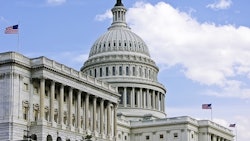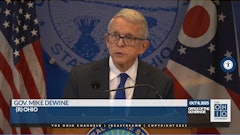
Canada’s long debate over cannabis legalization ended this summer with the passage of its new law, which will go into effect Oct. 17. In one form or another, cannabis consumers will able to partake legally in the largest regulated market in the world this week. Going forward, those regulations will continue to be ironed out into a more conducive business climate and in a way that meets growing consumer demand head-on.
By 2020, according to BNN Bloomberg, the legal Canadian cannabis market is expected to hit $6.5 billion in sales. (Canada will tax cannabis sales at 10 percent—or C$1 per gram, whichever is higher—nationwide.)
That’s just the start of it.
In these impending early days, each province will regulate adult-use sales and consumer use in different ways. Government-run corporations will oversee the distribution and tracking of cannabis products; a blend of private retail storefronts, online ordering and delivery services will connect the nascent adult-use market to the country’s anticipated consumer base.
In Ontario, which lays claim to the federal capital, Ottawa, and the country’s largest city, Toronto, the conservative provincial government will open its doors to the market on Oct. 17 with a government-run online sales portal. Presently, the province is working through cannabis retail business applications; storefronts will be opening and operating sometime in April 2019, and the province has chosen not to place a cap on the number of licenses issued (only one retail license per grower, however, will be permitted).
In British Columbia, home to Vancouver, provincial regulators have been slow to issue those retail licenses; only one storefront will be open on Oct. 17, kicking off an imbalance sense of supply and demand from the outset.
Already, industry stakeholders are predicting an early wave of “sold out” signs across the marketplace.
But more broadly, the Canadian precedent is a signal to the rest of the world, a moment in time that captures how powerful this 21st-century wave of reform really is. Across the border, in the U.S., it’s not yet entirely clear what the federal government is making of all this.
"Canada is setting a strong example for how to end marijuana prohibition at the national level and replace it with a system of regulated production and sales that is largely governed at the local level,” MPP Executive Director Steve Hawkins said in a public statement. “The U.S. and other countries grappling with the complexities of such a significant policy shift will have an excellent opportunity to learn from the Canadian experience.
"The Canadian model is rather similar to what many envision for the U.S., and in many ways it mirrors what is happening here, as states have taken the lead in regulating commercial cannabis activity. The big difference—and it is a critical difference—is the blessing provincial governments have received from their federal government. It is time for Congress to step up and take similar action to harmonize our nation's state and federal marijuana policies.”
This side of the border, indeed, the contrast will become clear.
CBT Editorial Director Noelle Skodzinski wrote about this in our October issue: “State authorities continue to struggle with rolling out legalization in what was once the world’s largest cannabis cultivation center, California, which is now experiencing a shortage of (legal) cannabis, while the Customs and Border Patrol (CBP) and other government departments waste federal resources monitoring the border to keep any non-citizens who have any ties to cannabis, legal or not, out of the U.S.”
The global cannabis market is looking away from the U.S. for its sources of capital and its broad market reach. At the top of the market, companies like Canopy Growth Corp., Aurora Cannabis, Tilray and Aphria are lining up prospective partnerships with major consumer packaged goods businesses and mainstream companies (like Coca-Cola and Constellation Brands). Those licensed producers are capitalized to grow only more influential under a legal adult-use scheme.
Already, for instance, Tilray is exporting cannabis to California for medical research purposes—putting a Canadian company in the driver’s seat, for now, in North American medical marijuana access. (A federal bill that would lift some medical marijuana cultivation restrictions is now working its way through the U.S. House.)
The Canadian legislative progress has also opened the door to public investment, leading many licensed cannabis producers to trade on the Canadian Securities Exchange and the Nasdaq—further distancing themselves, in a financial sense, from much of their competition on a global playing field.
“Federal legalization in Canada gives Canadian based companies a billion-dollar head start in emerging markets and the ability to operate internationally will put Canada in position to become the world leader for the introduction of regulated medical cannabis,” Phillip Millar, president of Canadian operations for Golden Leaf Holdings, said. “In addition, de-criminalization of cannabis will ease the stress on the criminal justice system and actually makes the streets safer by keeping young people out of jail for non-violent offenses. Adding on that cannabis is a giant tax revenue source, Canada is essentially stripping billions from organized crime and putting it into our tax coffers and those criminal or black-market operators will be forced to focus on jurisdictions where it is still illegal, like the U.S.”
Canada, which joins Uruguay as only the second country in the world to legalize cannabis, is now positioned as the global leader in the business. Its established export model, which is propping up medical markets in Europe, for instance, is a firm backbone for the country’s domestic marketplace.
The relationship between Canada and the U.S., then, in terms of cannabis reform, will be a noteworthy narrative in 2019.
“It’s great to see a prominent and sophisticated nation like Canada taking the lead on cannabis legalization,” Joe Lusardi, CEO of Curaleaf, said. “Hopefully the U.S. will soon follow suit and lift federal restrictions, allowing the cannabis industry to flourish to its full potential, creating jobs and tax revenue.”
Top photo courtesy of Adobe Stock


























